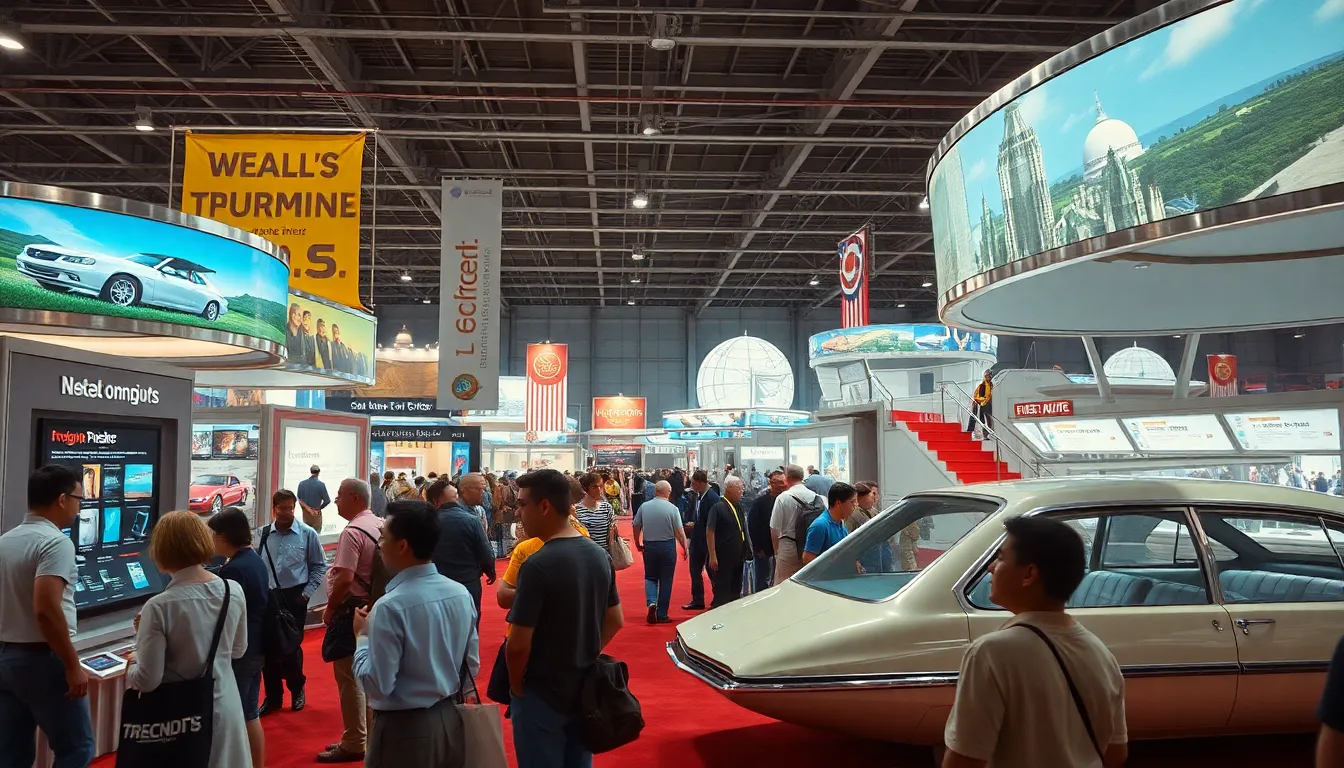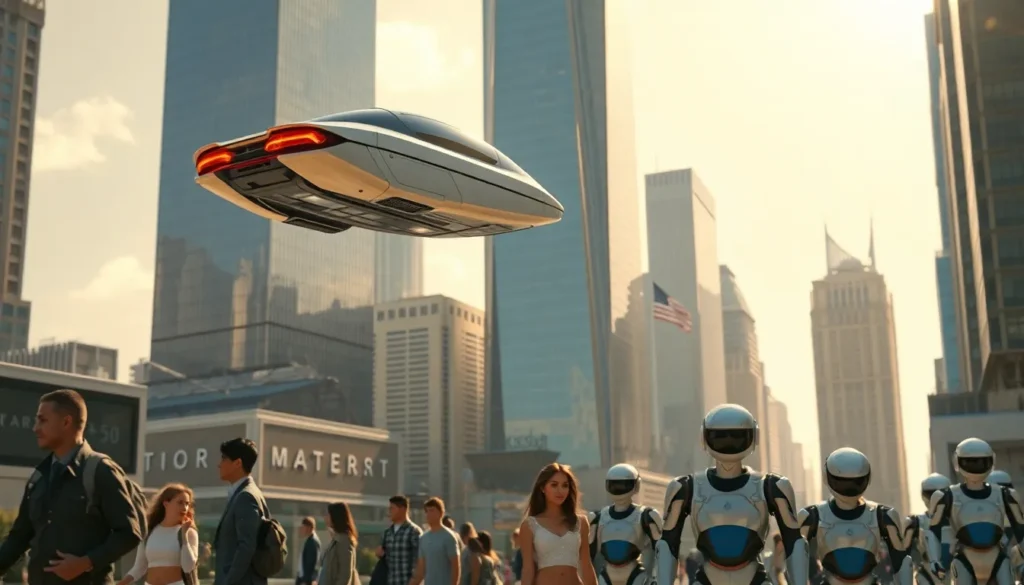Table of Contents
ToggleEver wondered what the folks of yesteryear thought the future would look like? It’s a wild ride through their imaginations, filled with flying cars, robot butlers, and perhaps a few too many assumptions about our love for spandex. As technology zooms ahead, it’s fascinating to peek back at those predictions and see just how far off the mark they really were.
Overview of Future Predictions from the Past
Past predictions about the future demonstrate creativity and optimism. Many forecasts featured innovative ideas such as flying cars, which captured the imagination of dreamers in the mid-20th century. Enthusiasts hoped for robot butlers to ease daily tasks, envisioning a life of leisure and convenience. Spandex, once deemed the fabric of the future, symbolized bold fashion choices and scientific advancements.
Looking at technological progress uncovers the contrasts between expectations and reality. The reality of autonomous vehicles began taking shape, surpassing the aesthetic visions of past innovators. Besides, artificial intelligence emerged, transforming industries and altering workplace dynamics. Predictions about personal robots proved less practical; however, advancements in robotics contributed to manufacturing and logistics.
Specific examples illustrate the gap between foresight and achievement. In 1964, scientists predicted the widespread use of technology that would allow for instantaneous global communication. Current smartphones embody that concept, revolutionizing how people interact. Meanwhile, concepts like space tourism appeared in predictions, with companies actively developing options for civilian travel beyond Earth.
People’s predictions often stemmed from cultural influences and technological limitations of their time. They projected aspirations onto future societies, imbuing visions with hope and excitement. As technology evolves, looking back on these predictions serves as a fascinating reflection on societal progress and innovation.
Historical Context of Future Predictions

Historical predictions about the future reveal fascinating insights into human creativity and optimism. Individuals from various eras envisioned technological advancements that often surpassed their realities.
Notable Predictions in the 20th Century
Predictions from the 20th century showcased extraordinary imagination. In 1964, the World’s Fair featured concepts of instantaneous global communication, which current smartphones realize. Authors like Arthur C. Clarke envisioned geostationary satellites, influencing modern communication systems. Other notable forecasts included flying cars, epitomized in the film “Back to the Future,” symbolizing a desire for convenience and leisure. Predictions often combined technological optimism with cultural aspirations, providing a fascinating reflection of the societal context of the time.
Predictions from the 19th Century
Nineteenth-century predictions illustrate a blend of ambition and naivety. Jules Verne’s “From the Earth to the Moon” suggested space travel over a century before it became a reality. The rise of the industrial revolution inspired visions of automated factories. Innovators speculated about personal transportation, like the automobile, which hugged the horizon of possibility. In literature, the concept of robots emerged, laying groundwork for later technological advancements. These early forecasts sparked discussions about society’s capacity for progress and the implications of such changes.
Analyzing the Accuracy of Predictions
Evaluating past predictions offers insights into how accurately visionaries envisioned the future. Some forecasts proved remarkably successful, while others highlight misguided assumptions.
Successes in Predicting the Future
Predictions of flying cars and space travel captured the public imagination. Arthur C. Clarke’s foresight of geostationary satellites became a reality in the 1960s, revolutionizing global communications. The concept of instantaneous global communication, first proposed in 1964, aligns with today’s smartphone technology. Innovations like virtual meetings showcase how these early dreams manifested. Autonomous vehicles mirror the aspirations of a more automated future. Companies like Tesla and Waymo are realizing these possibilities, affirming the impact of visionary ideas.
Failures and Misconceptions
Not all predictions achieved their intended outcomes. The notion of robot butlers, while endearing, remains largely unrealized. Misjudgments about the timeline for advancements often occurred. Predictions of flying vehicles by the 21st century did not materialize as anticipated. While automated factories emerged, they differ from the utopian visions presented in the past. The emphasis on leisure and convenience in these forecasts overlooked practical limitations of technology. Such failures remind us of the complexities in predicting human behavior and societal shifts.
Impact of Cultural and Technological Influence
Cultural and technological influences shape future predictions significantly. Predictions often reflect societal values, fears, and aspirations from their time.
The Role of Science Fiction
Science fiction has inspired countless predictions about the future. Writers like Isaac Asimov and Philip K. Dick introduced concepts that sparked technological advancements. These stories shaped imaginations, leading to developments like robotics and artificial intelligence. As a product of creative vision, science fiction often mirrors contemporary concerns, allowing society to explore possibilities. Such narratives encourage inventors and innovators to push boundaries, fostering real-world applications. Scenarios depicted in films, such as “Star Trek,” influenced communication technology, leading to devices like tablets and smartphones.
Technological Advancements and Their Predictions
Technological advancements often align with earlier predictions, showcasing progress in various fields. For instance, personal computers emerged following predictions from the 1970s about the future of technology. Innovations like the internet materialized, fulfilling hopes for global connectivity. In contrast, some predictions, such as flying cars, remain unrealized, illustrating limitations in feasibility and societal readiness. Autonomous vehicles exemplify significant progress, visualizing predictions made decades ago. Companies like Tesla focus on creating experiences matching earlier visions. These advancements emphasize the continuous interplay between innovation and expectation, showcasing how cultural influences drive technological evolution.
Lessons Learned from Past Predictions
Past predictions offer valuable insights into how society envisions progress. Their lessons shape current understanding of innovation and human behavior.
Understanding Trends and Patterns
Predictions often reflect societal trends and technological aspirations. They provide perspectives on the hopes and fears characterizing different eras. For instance, the mid-20th century embraced space exploration as a symbol of progress. In contrast, today’s predictions emphasize sustainability and digital connectivity. Analyzing past forecasts reveals recurring themes, such as the optimism surrounding automation and communication. Overall, patterns emerge that underline the evolving relationship between technology and humanity.
Implications for Contemporary Society
Modern society can derive important lessons from historical predictions. Recognizing the successes and failures of the past promotes realistic expectations for future advancements. Awareness of the limitations encountered in past forecasts encourages cautious optimism. Additionally, understanding the cultural context behind predictions helps guide today’s innovations. Historical insights can inspire thoughtful approaches to contemporary challenges. By reflecting on these lessons, society better navigates technological progress and societal changes ahead.
Past predictions about the future reveal a fascinating blend of creativity and optimism. They not only highlight the aspirations of their time but also serve as a lens through which to view technological progress. While some visions have come to fruition, others remain elusive, reminding society of the complexities involved in innovation.
These reflections encourage a balanced perspective on future advancements. By understanding the hopes and fears that shaped past predictions, modern society can navigate the challenges of today with a sense of cautious optimism. Embracing the lessons learned from history allows for a more informed approach to the evolving relationship between technology and humanity.








